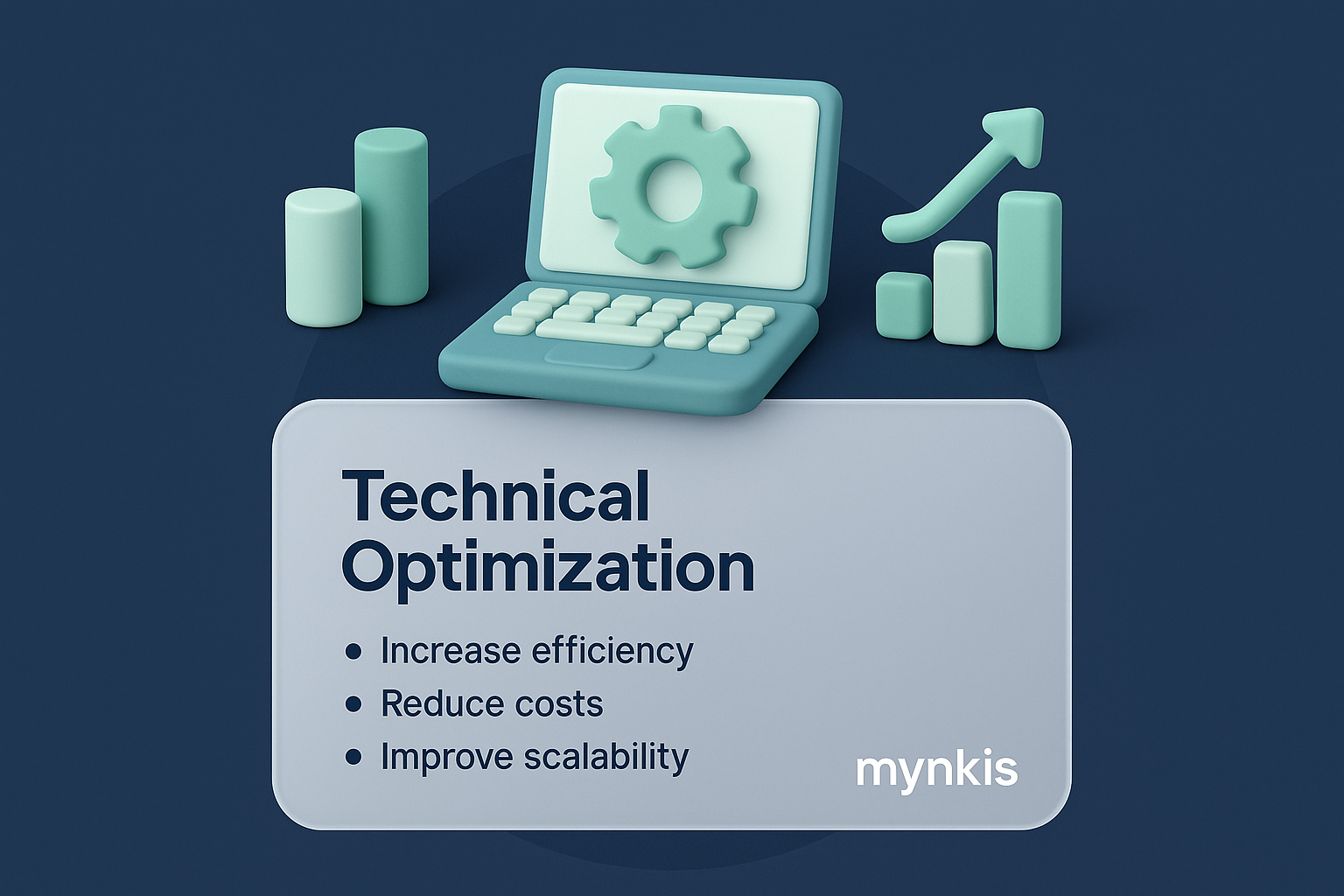Schedule a Demo
When it comes to establishing a strong online presence, the performance of your software is crucial. In the age where users expect instant responsiveness, any lag or delay can impact not just their experience but also your bottom line. From a website that loads in the blink of an eye to applications that feel intuitive and smooth, the technical optimization of your software can make or break user satisfaction and retention.
Technical optimization encompasses a wide range of practices aimed at enhancing the speed and efficiency of your software. Key elements include code optimization, database tuning, caching strategies, and the smart use of content delivery networks (CDNs). Each of these elements plays a vital role in reducing the time it takes for your software to respond to user actions, thereby enhancing user experience.
At the heart of technical optimization lies code optimization. This involves streamlining your codebase to eliminate redundancies, reduce complexity, and improve the overall efficiency of your software. I've worked with many business owners who've seen significant improvements in their site's performance simply by optimizing their code. From minimizing the use of heavy JavaScript frameworks where not necessary, to leveraging the power of modern CSS methodologies, code optimization is foundational.
Caching is another potent tool in your optimization arsenal. By storing frequently accessed data closer to the user, caching can dramatically reduce load times. When I assist clients in implementing effective caching strategies, I often see load times cut by more than half. Browser caching, server-side caching, and leveraging platforms like Redis can make a significant difference.
Content Delivery Networks (CDNs) serve as another critical facet of software performance. They distribute your content across multiple servers worldwide, ensuring that users get content from the nearest server to them. The integration of a CDN into your custom software development or enterprise web solutions can make your software feel 'instant' even to users on the other side of the planet.
Your database's performance is pivotal to the overall software experience. Database tuning, including optimization of queries, indexing, and proper data architecture, can significantly improve the speed at which your software retrieves and manipulates data. In my work with numerous businesses, a well-tuned database has proven to be the unsung hero behind seamless user experiences.
It's tempting to prioritize aesthetic appeal over performance, but finding the right balance is key to a successful online presence. Advanced design elements can add to the richness of the user experience but at the cost of slower load times if not managed correctly. Leveraging lightweight design practices and next-gen technologies like WebP for images can preserve visual appeal while optimizing performance.
The optimization journey doesn't end with implementation. Continuous measurement and monitoring are crucial to maintaining and improving software performance over time. Utilizing tools like Google Lighthouse, WebPageTest, and performance monitoring platforms can give you actionable insights into areas for improvement. Regularly checking on your software's performance is akin to keeping your business's pulse—it's essential for ongoing health.
The relationship between software performance and SEO is undeniable. Search engines like Google have clearly stated that page speed is a ranking factor. A technically optimized site not only provides a better user experience but also boosts your chances of ranking higher in search results. When crafting custom software development solutions for clients, integrating SEO-friendly performance optimizations from the ground up yields significant long-term benefits.
Reflecting on various clients' projects, several standouts demonstrate the power of technical optimization. One e-commerce site saw its conversion rate rise by 20% after significant code optimization and the strategic implementation of a CDN. Another SaaS platform decreased its load time from 5 seconds to under a second by meticulously fine-tuning its database and leveraging caching. These examples underscore the tangible benefits of putting technical optimization at the forefront of software development.
In today's mobile-first world, optimizing your software for mobile performance is non-negotiable. The strategies we've discussed—code and database optimization, caching, and leveraging CDNs—all apply to mobile applications and mobile versions of your website. Ensuring your software is mobile-friendly not only enhances user experience but is critical for SEO and market penetration.
The landscape of custom software development and enterprise web solutions is ever-evolving. Staying ahead means continually educating yourself on the latest performance trends and technologies. Engaging with tech communities, attending industry conferences, and consulting with experts can keep your approach to technical optimization fresh and effective.
At the end of the day, technical optimization is all about enhancing user experience. From quick load times to seamless interaction, your efforts should consistently focus on making your software more intuitive and efficient for the end-user. Happy users are more likely to become loyal customers and ambassadors for your brand, turning your well-optimized software into a valuable asset for your business.
Embarking on the journey of technical optimization can seem daunting, but the benefits to your business are profound. From reducing bounce rates and increasing conversion rates to improving your SEO and user engagement, the importance of performance optimization cannot be overstated. Whether you're a startup taking your first steps online or an established entity looking to revamp your software, the focus on creating a fast, efficient digital presence should be at the top of your priority list.
